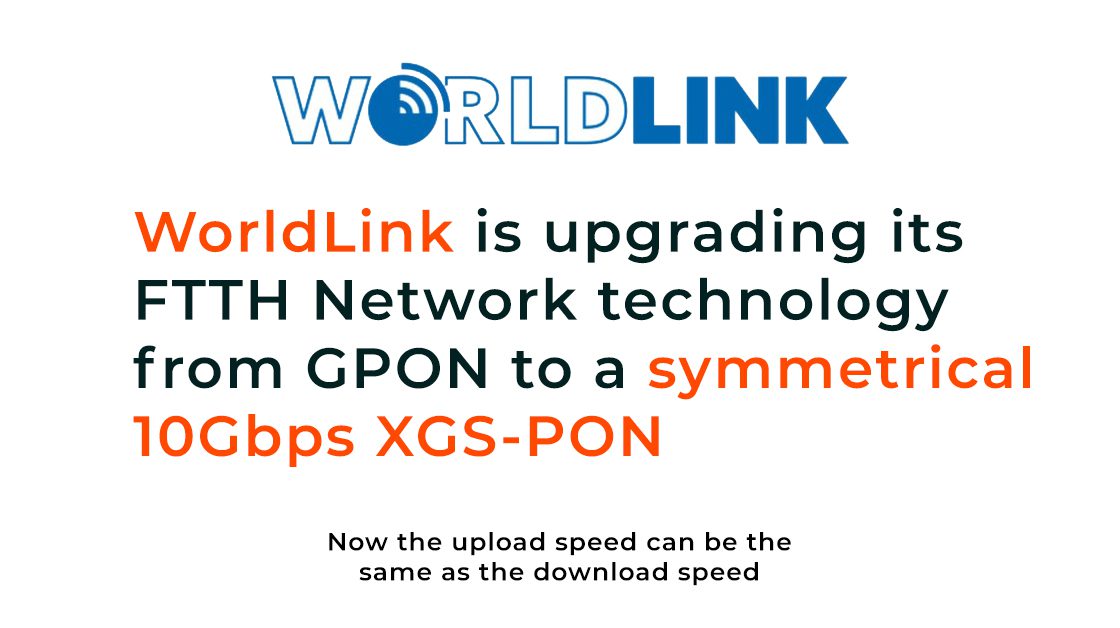Nepal’s largest internet service provider, Worldlink Communications Limited, is set to upgrade its existing passive optical network (PON) standard from the gigabit-capable passive optical network (GPON) to XGS-PON.

The new XGS-PON standard will enable symmetric shared internet access rates up to 10Gbps (gigabits per second or Gbit/s). By symmetric, it means it can deliver the same data transfer rate in both directions, i.e., same download and upload rates.
The existing asymmetric GPON technology Worldlink is using is only capable of transferring up to 2.4Gbps download and 1.25Gbps upload speed.
What are PON, GPON, and XGS-PON?
ISPs in Nepal today use fibre optic technology to provide internet access to users, replacing copper-based connections like ADSL. The network that uses fibre optic cables is known as FTTH, short for fibre-to-the-home.
To deliver internet access to end-users in an FTTH network, a point-to-multipoint fibre-optic communication system is used, called the passive optical network (PON).
Unlike the active optical network (AON), which uses electrically powered devices, PON uses unpowered, passive optical splitters to distribute the signal across the endpoints.
There are different PON standards. The most popular is the GPON, or Gigabit-capable PON, which can deliver data rates of up to 2.5Gbps down and up to 1.25Gbps up. This is the current PON standard that Worldlink is using.
In response to the increased demand for higher bandwidth, a new, upgraded version of GPON, XG-PON, was introduced by ITU-T, the International Telecommunication Union’s Telecommunication Standardization Sector.
The XG-PON (10G-PON), where the initial letter “X” represents the number 10, has a downstream capacity of 10Gbps and an upstream capacity of 2.5Gbps, which is asymmetric.
The XGS-PON is an improved 10G-PON standard that can provide 10/10Gbps symmetric bandwidth. Thus, after “XG,” the letter “S,” which stands for symmetrical, was added.
ALSO READ: Wi-Fi Nepal introduces 30Mbps Internet Plan at Just Rs. 333 Per Month
What does this mean for Worldlink and its users?
Worldlink said that it has successfully completed testing to upgrade its GPON to XGS-PON technology. The ISP says that it will gradually upgrade its current GPON network to XGS-PON to meet the current bandwidth demand. This makes it the first company in Nepal to upgrade its network to XGS-PON.
The upgrade will enable the ISP to provide symmetric download and upload speeds to its customers. Due to the limitations of GPON technology, the upload speed is currently slower than the download speed.
Compared to current GPON technology, the new 10Gbps XGS-PON has up to eight times more upload bandwidth and four times more download bandwidth capabilities.
The XGS-PON system also has a greater split ratio of up to 1:256, meaning a single XGS-PON OLT port can provide an internet connection to up to 256 users. This is twice as many as the GPON OLT port can support, according to Worldlink.
With the use of this technology, Worldlink will be able to provide faster than 1Gbps internet connections to its customers in the coming days. Additionally, the company plans to use this new technology to offer a variety of services to corporate customers.
Worldlink mentioned that it is also planning to test 25G-PON in collaboration with its infrastructure company, Nokia.
ALSO READ: Satellite Operator Kacific to Improve Broadband Internet Access in Nepal
-
Realme C63 with 50MP Camera Now Available in NepalHIGHLIGHTS The Realme C63 price in Nepal is Rs. 15,999 (4/128GB). It is powered by…
-
Yamaha MT-15 Version 2.0 Expected to Launch Soon in Nepal: Find Out What’s NewHIGHLIGHTS Yamaha MT 15 V2 price in Nepal is expected to be around Rs. 6…
-
Yamaha Aerox Review: Fast and Fun with R15 at Heart!TechLekh Verdict Yamaha Aerox 155 is an outstanding scooter that combines power, style, and advanced…





















